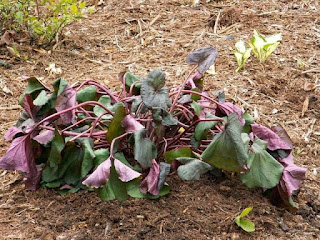Monday, February 4, 2013
Fire, Snow, Drought: Extreme Weather Could Affect How We Garden in Northern Nevada
In 2012, a record 3,527 monthly weather records for heat, rain and snow were broken in the U.S., according to information from the National Climatic Data Center. In Nevada, we experienced a total of 36 broken heat records, four of them in Washoe County, and 86 large wildfires. As bad as it seems, the frequency and intensity of extreme weather events is likely to worsen with climate change. So what does that mean for gardeners? Will our gardening practices need to change as a result of such a prediction?
They will, according to a 2002 study, “Gardening in the Global Greenhouse: The Impact of Climate Change on Gardens in the U.K.” This study concluded that climate change could bring about changes in gardening style. In the U.K., the iconic English cottage garden style of gardening, with its dense plantings of water-hungry traditional flower varieties and large turfgrass areas, could be replaced by sparser plantings of bananas and bamboo, according to the study authors. Applying their conclusions to climatic trends in Nevada, I’ve come up with three trends that could affect the way we garden.
• Higher temperatures. Higher temperatures, especially in summer and fall, stress plants that are not adapted to such conditions. Higher temperatures also dry out soils faster. That means gardeners will have to be more vigilant to watch for signs of water stress in their plants — wilting and eventual crisping of leaf margins indicate water stress.
• Greater frequency of drought. Droughts in our region are expected to occur more often and be more severe. Because droughts are long-term events, they tend to affect trees and shrubs, which are longer lived (and more expensive) landscape plants. Trees, in particular, are also slow to show stress from prolonged drought, so it’s difficult to know they’ve been affected until it’s too late. Drought-affected trees are also more susceptible to insect pests, especially bark beetles and spider mites.
• More large (90-acres or greater) wildfires. The average size of wildfires in the U.S. has increased during the past decade. This means more Nevadans could be affected by any wildfire event. Nevada homeowners will protect their homes and families by designing fire-safe landscapes. They will plant low-growing non-woody plants (flowers and succulents) within 3 feet of the home and woody plants (trees and shrubs) at least 10 feet away. Evergreen trees and shrubs, such as cedar and juniper, which contain combustible chemicals, will be planted only in areas 30 feet or more from the home depending on slope.
Link To Article
Labels:
Angela Poulos
Subscribe to:
Post Comments (Atom)

No comments:
Post a Comment